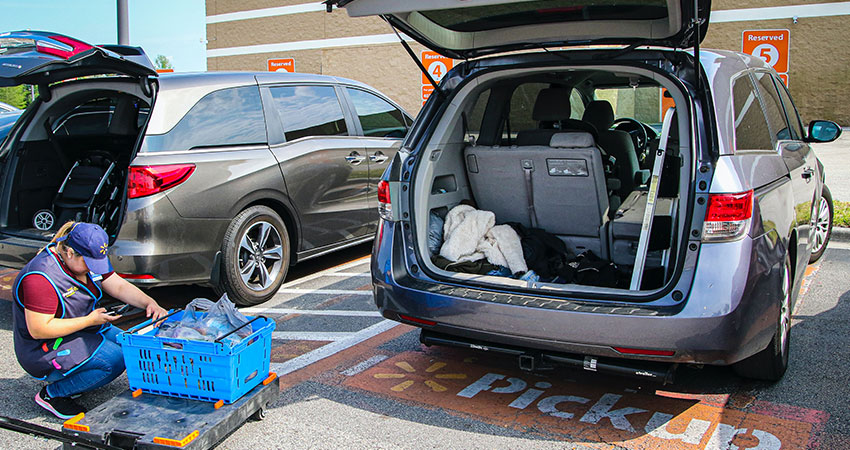Curbside grocery pickup at a Walmart. Photo credit: Mick Haupt on Unsplash
Even a year-plus into the pandemic, more U.S. consumers are leaning into e-grocery and less are visiting stores, according to a new study from Gallup, reflecting continued uncertainty and concern among shoppers.
The frequency of ordering takeout or delivery meals more than weekly has ticked up only slightly since 2019, from 12% to 14%, Gallup found. Overall, the percentages of consumers using e-grocery remain in the single digits.
While grocery stores have generally remained open, even when many other businesses were locked down in the spring of 2020, many consumers continue to avoid public places. They’re opting instead for curbside pickup or delivery of groceries, which is why companies like Instacart, Shipt, Peapod and FreshDirect are booming.
Gallup conducted 1,007 telephone interviews with U.S. adults between July 6-21, 2021, with a sampling error rate of +/- 4%.
According to Gallup, more than twice as many U.S. adults are ordering groceries online compared to 2019, from 11% to 23%. Of those, 3% said they do so more than once a week (up from 1%), 9% do so weekly (up from 3%) and 11% once or twice a month (up from 7%).
Even with the shift, the majority of Americans say they have never shopped online for groceries (64%), although this is down from 81% two years ago.
Going the other way, the frequency of grocery store visits is shifting. While 48% say they shop at a grocery store at least weekly, the percentage of those going more than once a week has slipped since 2019, from 37% to 31%. Those who shop once or twice a month in person has slightly increased, from 14% to 18%, which may indicate they’re doing more online ordering.
Demographics of course impact the propensity to do e-grocery. Those most likely to do so at least monthly are married with children under 18, with household income of at least $100,000 and under 55. These same families are also showing declines in the frequency of grocery store shopping.
In June, Symphony RetailAI reported that omnichannel grocery shoppers spend on average 20% more and shop more frequently compared to those that just visit the store, based on its research.

